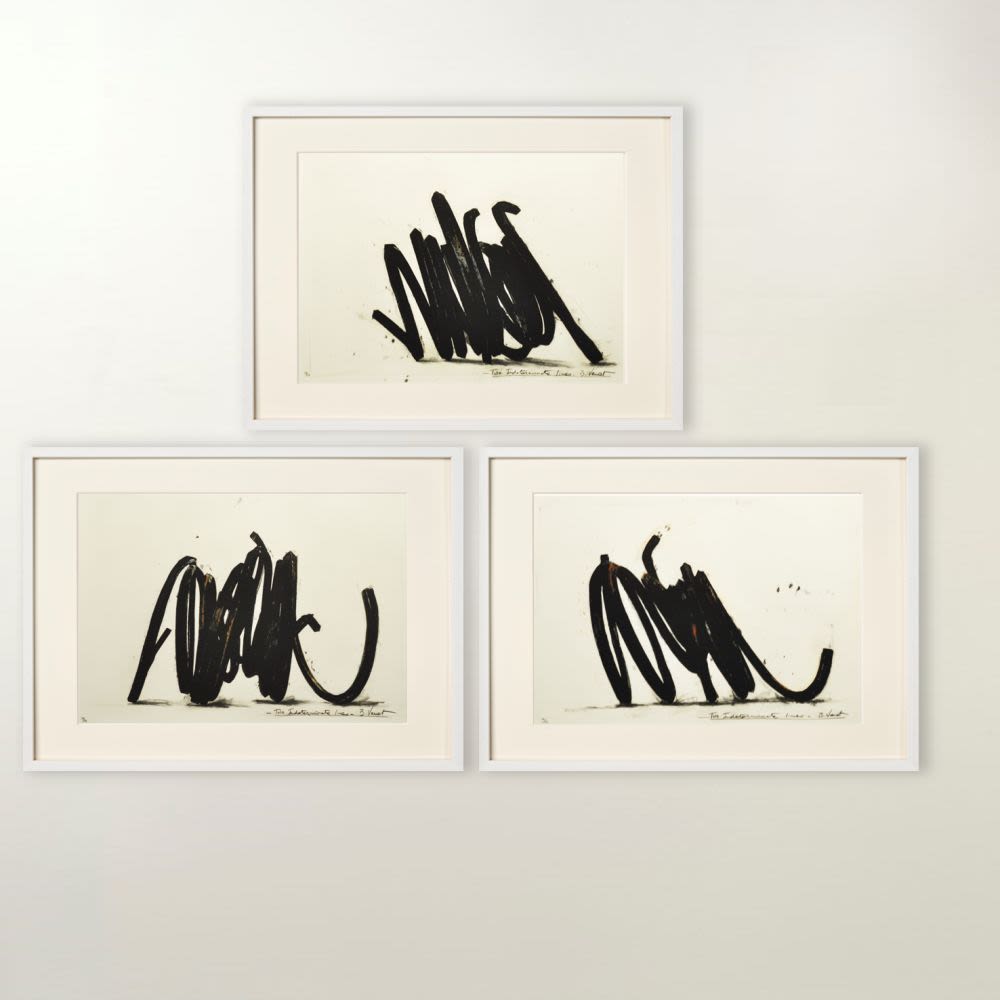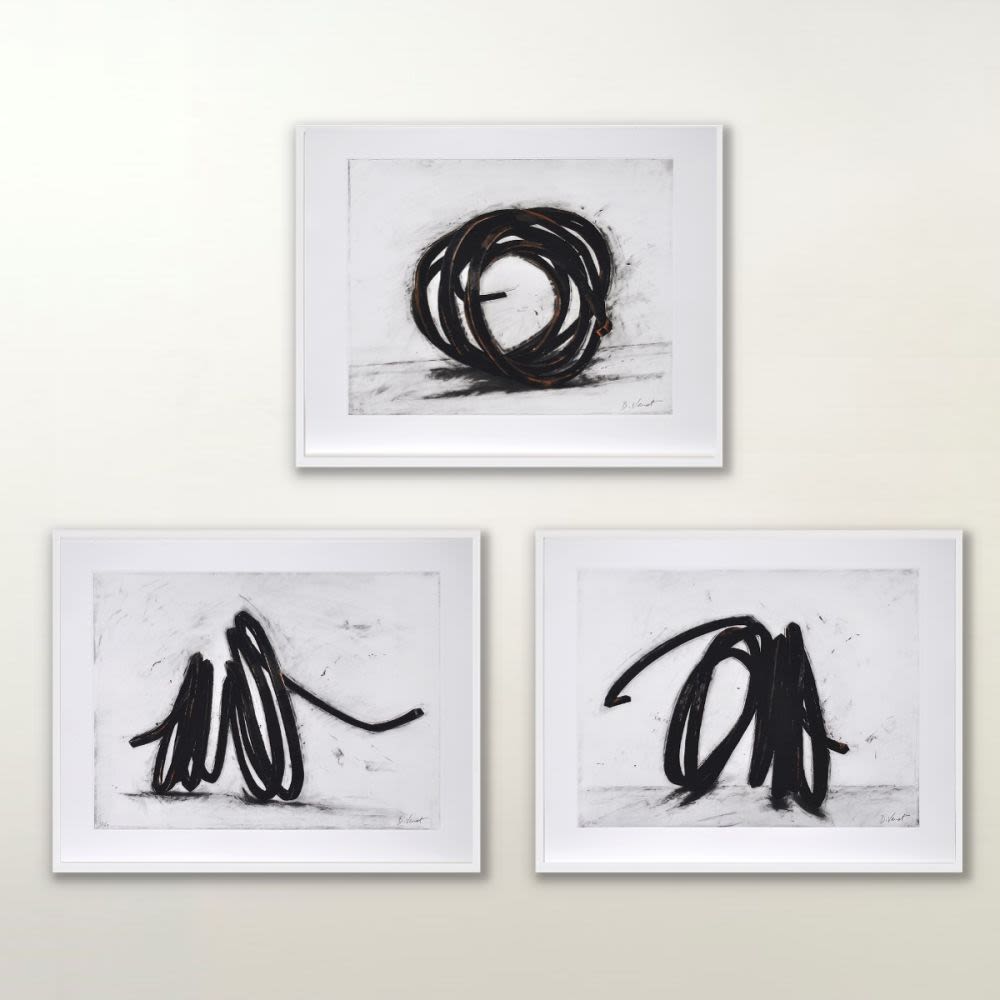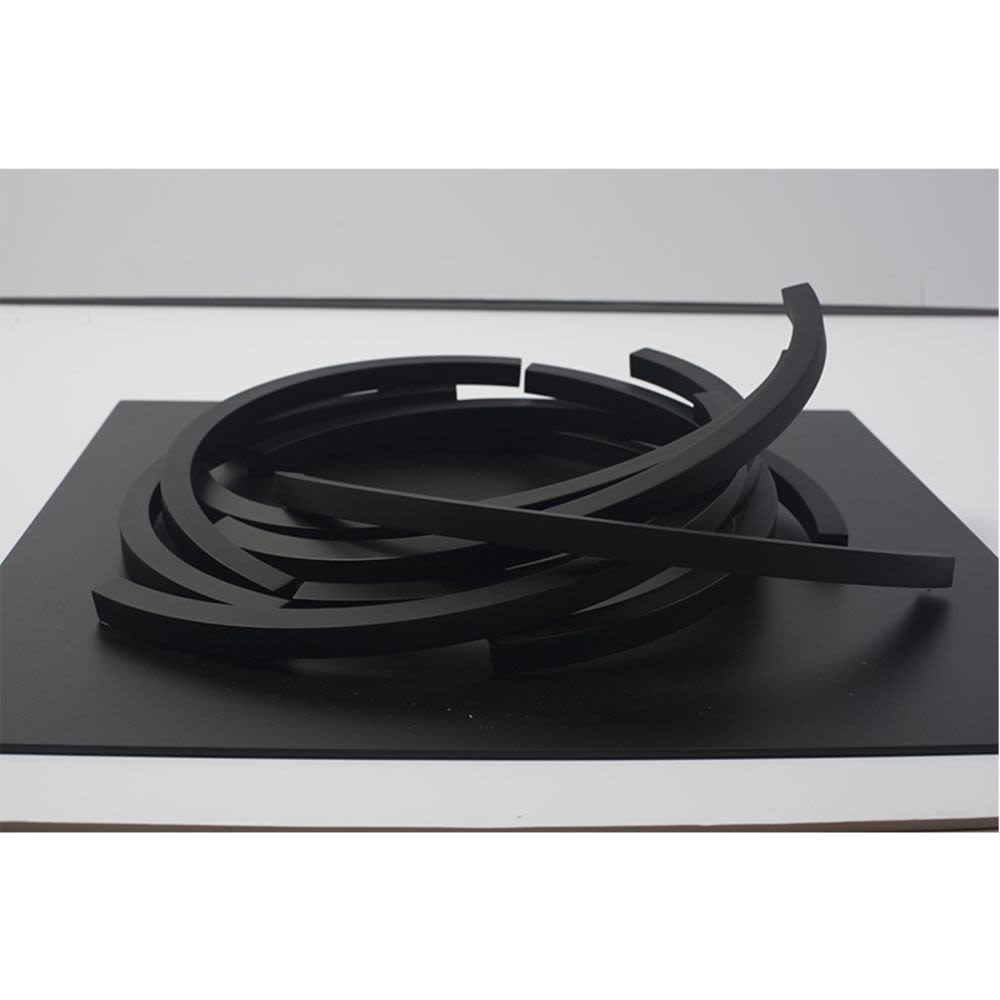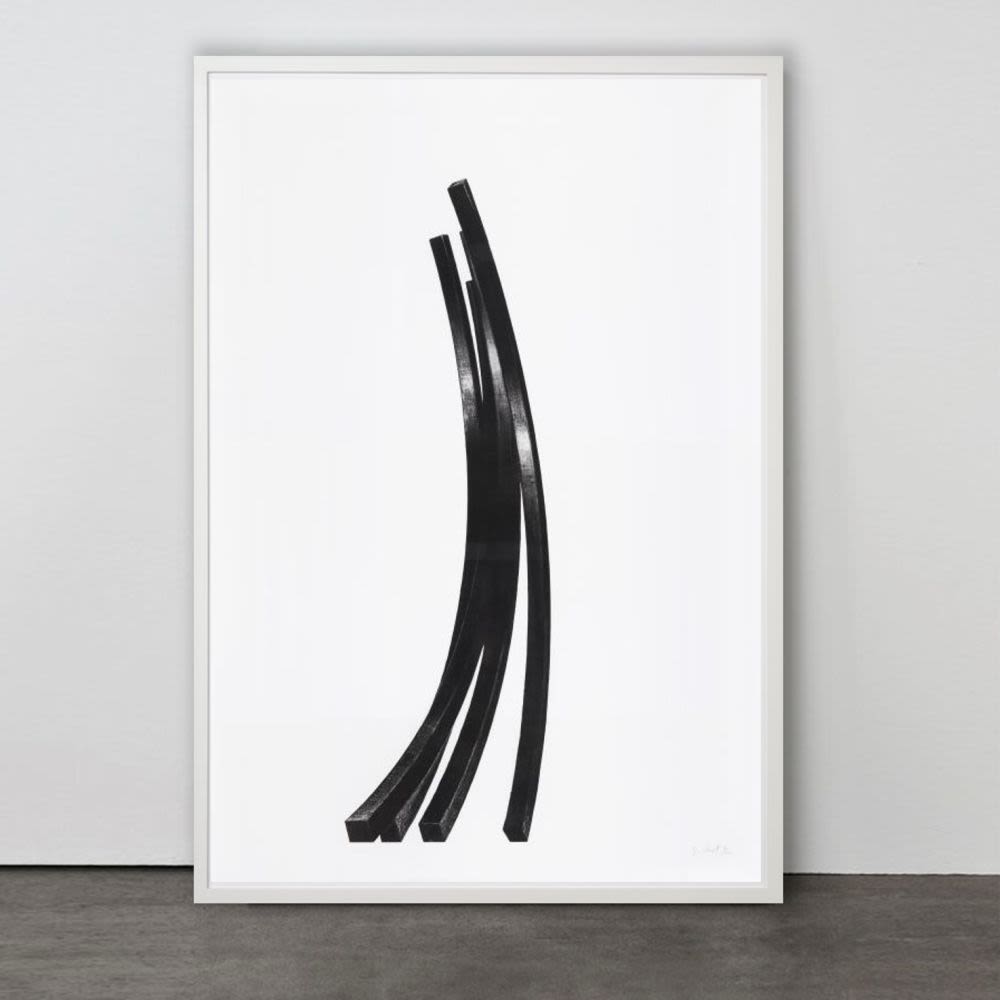Bernar Venet
Bernar Venet (b. 1941, Château-Arnoux, France) is a pioneering French conceptual artist whose practice spans sculpture, painting, drawing, installation, sound, poetry, and performance. Known for his radical formal explorations and mathematical rigor, Venet has played a key role in the development of Minimal and Conceptual Art since the 1960s.
After briefly studying at La Villa Thiole in Nice, Venet began his career with experimental works involving industrial materials—piles of gravel, coal, or tar, and reliefs made from cardboard and bitumen. His move to New York in 1966 marked a turning point, as he began incorporating mathematical equations and scientific notation into his art, challenging traditional notions of aesthetic value and authorship.
From the early 1980s onward, Venet shifted his focus to monumental steel sculptures. His iconic series—Arcs, Straight Lines, and Indeterminate Lines—reflect a dynamic tension between control and unpredictability, structure and chaos. “They are a test of strength,” Venet has said. “A battle between myself and the piece of metal.”
Venet's work is included in more than 100 museum collections worldwide, including the Museum of Modern Art (MoMA) and the Guggenheim in New York, the Centre Pompidou in Paris, and LACMA in Los Angeles. He has been honored with numerous awards, including the Chevalier de la Légion d’Honneur and the 2016 Lifetime Achievement Award from the International Sculpture Center. In 2014, he established the Venet Foundation in Le Muy, France, a private institution dedicated to his work and legacy.
Venet has had major retrospectives at MAC Lyon and MAMAC Nice, and his large-scale public sculptures are permanently installed in cities across Europe, Asia, and the Americas. His monumental L’Arc Majeur (2019), one of Europe’s largest public sculptures, stands beside the E411 highway in Belgium.
He lives and works between Le Muy and New York.
“ Making something that is already understood and accepted by the art world is boring. „









